Road to Yokomine Temple: Shikoku’s Most Difficult Path
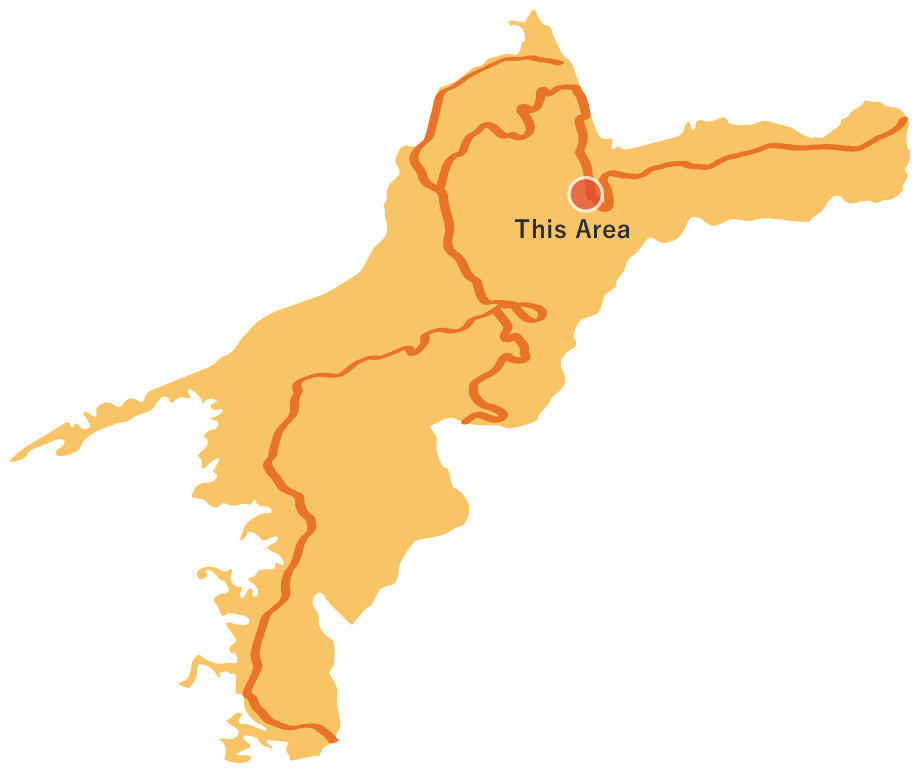
Road to Yokomine Temple: Shikoku's Most Difficult Path
This is the most difficult 9.5 km long route to Yokomine-ji Temple, which is 750 m above sea level and the third highest altitude among 88 shrines. The elevation gradually rises until long straight stairway to the gate of Yokomineji Temple comes in the sight. Standing at the temple entrance, visitors feel the joy of conquering the most difficult part of the trail.
Road to Yokomine Temple: Shikoku's Most Difficult Path(9.5km)

 Spots to photograph
Spots to photograph
If you wish to receive a certificate, please take a photo that includes yourself at the designated photo point for each course.
Nearby sightseeing spots

-
1
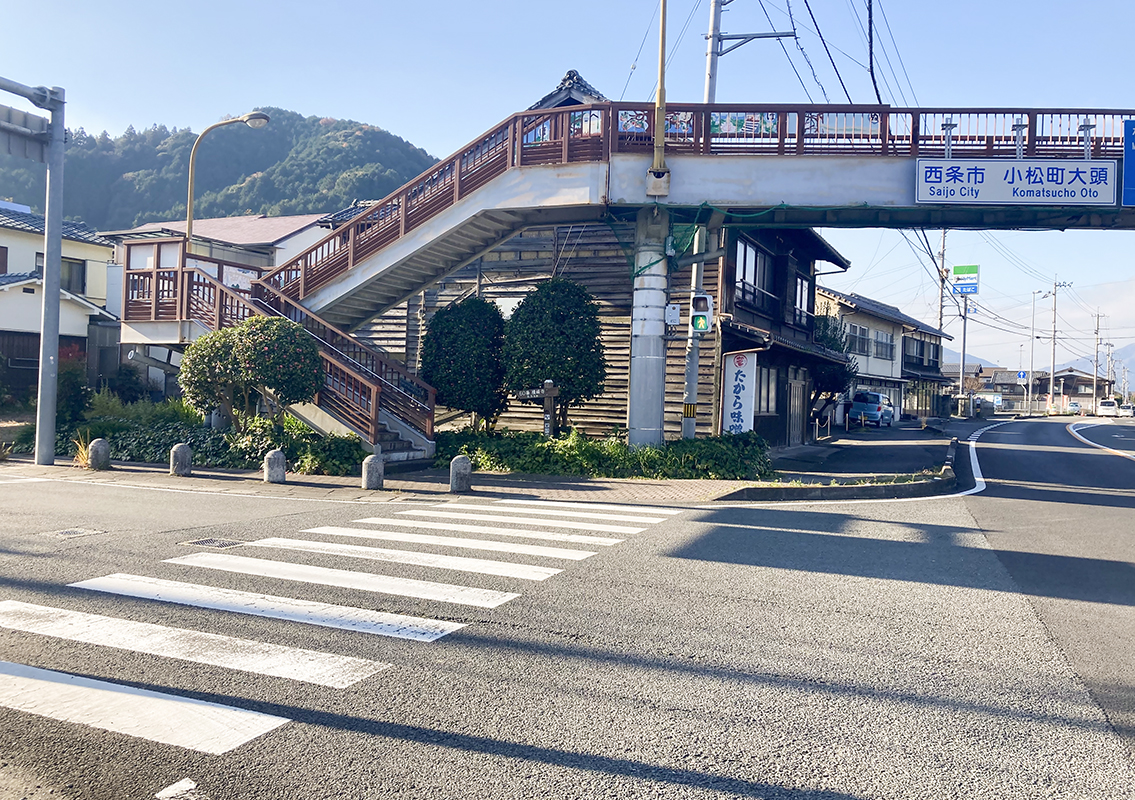 Ooto intersection
Ooto intersectionThe starting point is the Ooto intersection at the intersection of National Route 11 and the Ishizuchi Tanbara Line. A 7.3 km paved road leads to the Yunami Rest Station and then 2.2 km of unpaved mountain road with a steep staircase at a height of approximately 500 meters. There are no places to restock your supplies other than water in the 20 km stretch between this point and the Ooto intersection, including the next route to Kouenji Temple No. 61. The route goes along the Myodani (Taetani) River to Yokomineji Temple. The mountain road from the Yunami Rest Station may get unsafe when the water level is high at the downstream. You may want to keep an eye on weather before visiting.
-
2
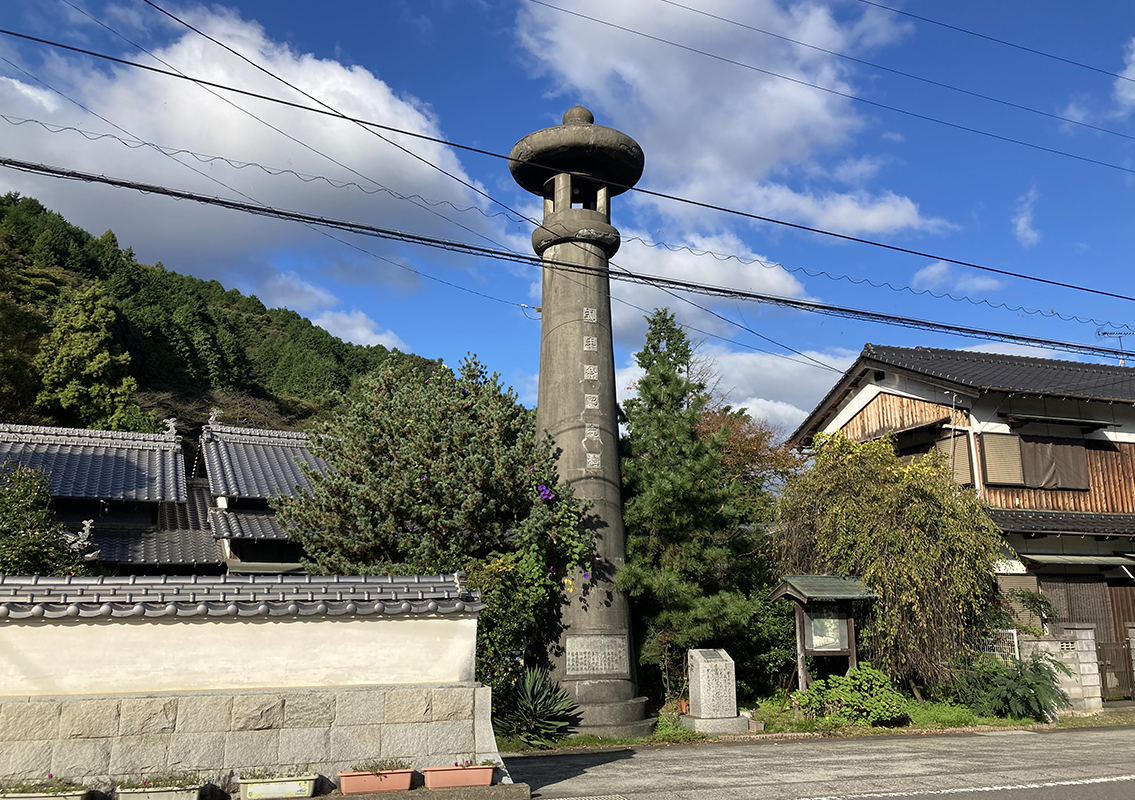 Ishizuchi Shrine
Ishizuchi ShrineA 9.5-meter-high concrete lantern built inside the shrine during its completion in 1931 has been kept lit for more than 90 years. This street was called "Oyamado" (mountain road) at the western trailhead of Mt. Ishizuchi in the old days, and pilgrims who wanted to visit Mt. Ishizuchi and Yokomine Temple would walk by this lantern in the middle of the night. The lantern was designated as national registered tangible cultural property in 2001.
-
3
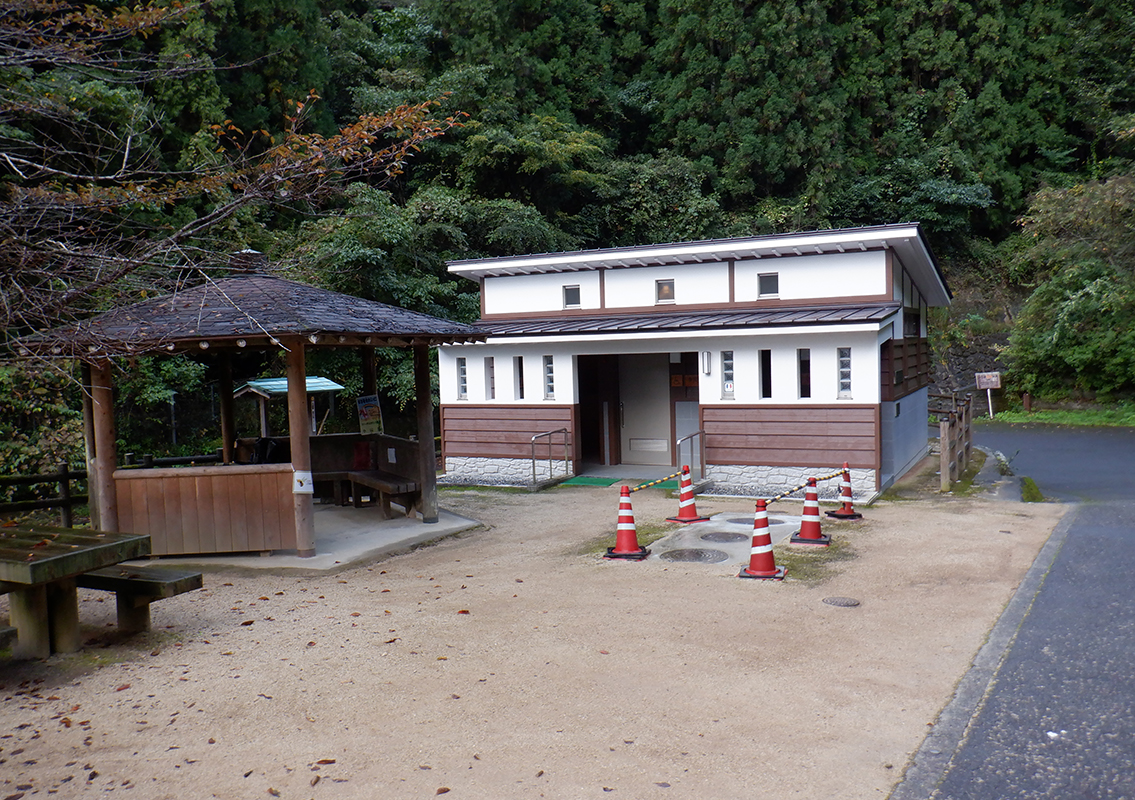 Yuunami Rest Station
Yuunami Rest StationYuunami Rest Station arrives after a short walk straight down the paved prefectural road. it has facilities including parking lot (to accommodate about 10 cars), a comfortable restroom, a pavilion, and benches that were renovated in 2018, as well as a spring water fetching station at the foot of the stairs. You have to buckle up for hilly road ahead.
-
4
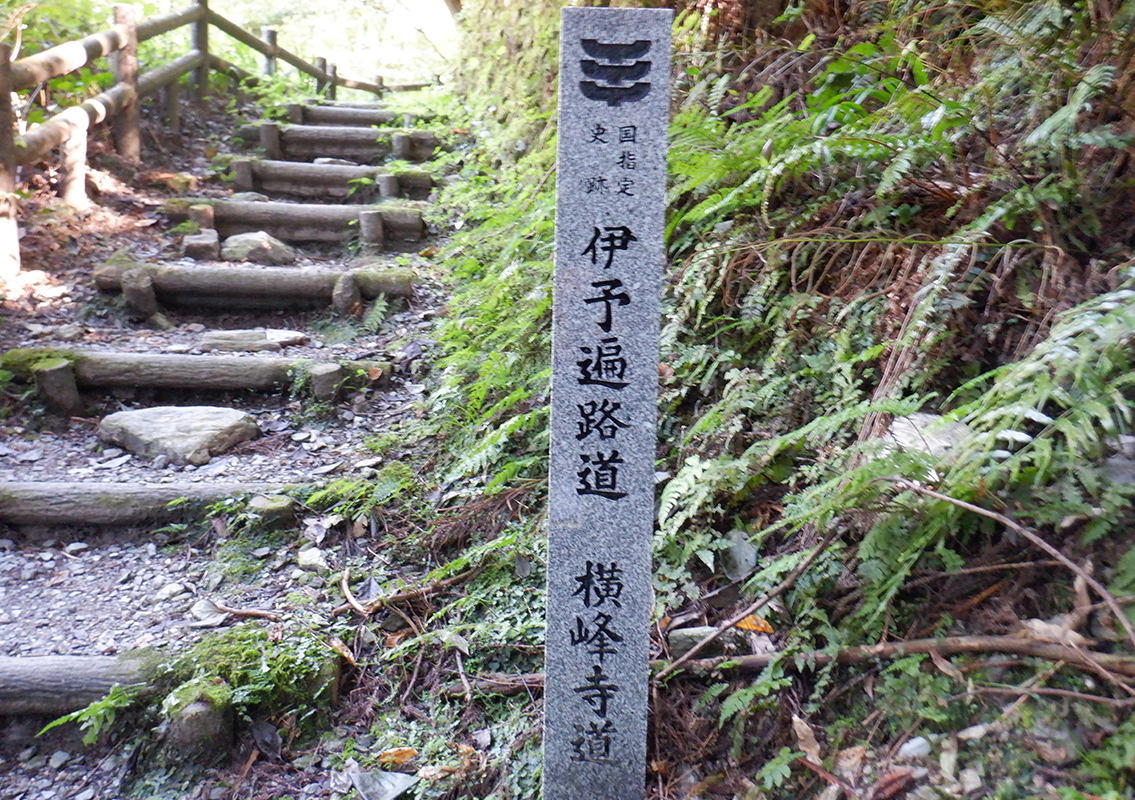 National Historic Site Iyo Pilgrimage Road, Yokomine Temple Road
National Historic Site Iyo Pilgrimage Road, Yokomine Temple Road1.7 km stretch from the stairs next to the Yunami Resting Area to Yokomine Temple was designated as the Yokomine Temple Road, a National Historic Site Iyo Henro Road as of October 3, 2016. You can find stone markers at every 109 m to indicate the distance to Yokomine Temple. The Yokomine Temple Road has been the heart of Ishizuchi Shukendo since ancient times and had close religious association with the Ishizuchi mountain beliefs. The designated National Historic Site has been recognized as having extremely high cultural asset value, because of the well-preserved old road, and the remains of stones.
-
5
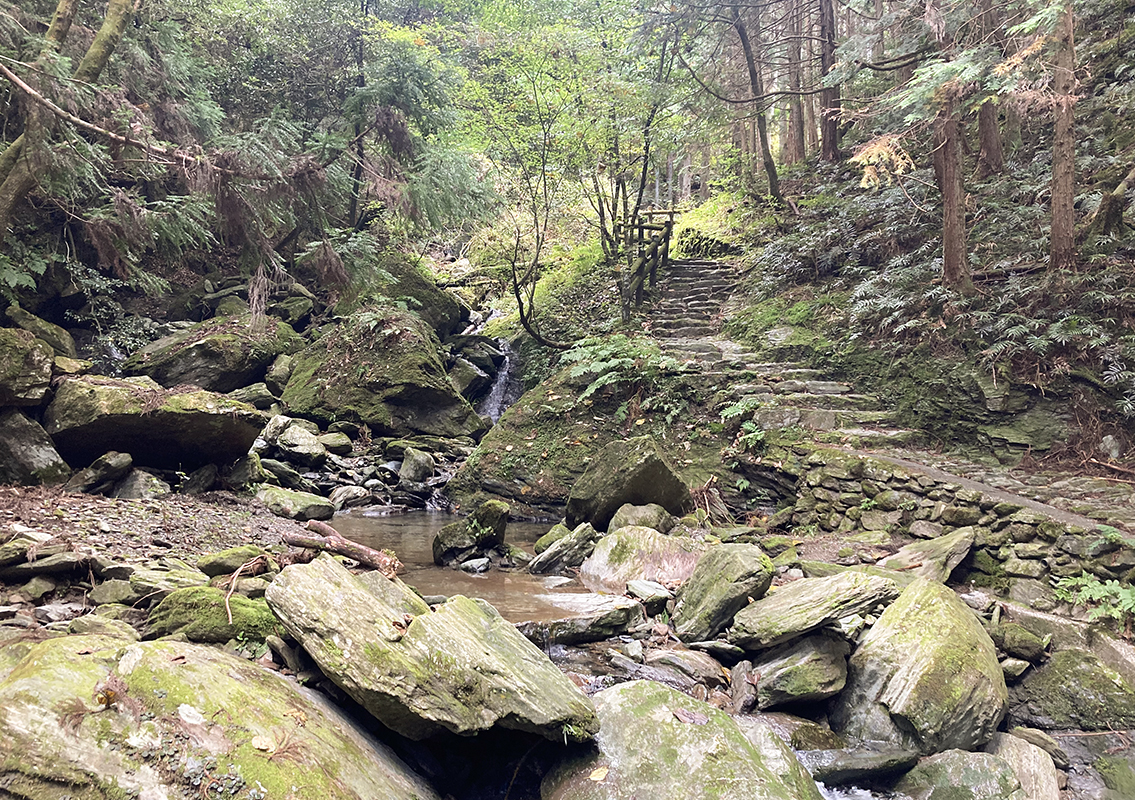 Myounotanigawa River
Myounotanigawa RiverThis route follows the Myounotanigawa River. This area is near the headwaters of the Myounotanigawa River, with a quaint path brimming with the sound of rushing water, ferns on the mountains, and the green of moss on the rocks.
-
6
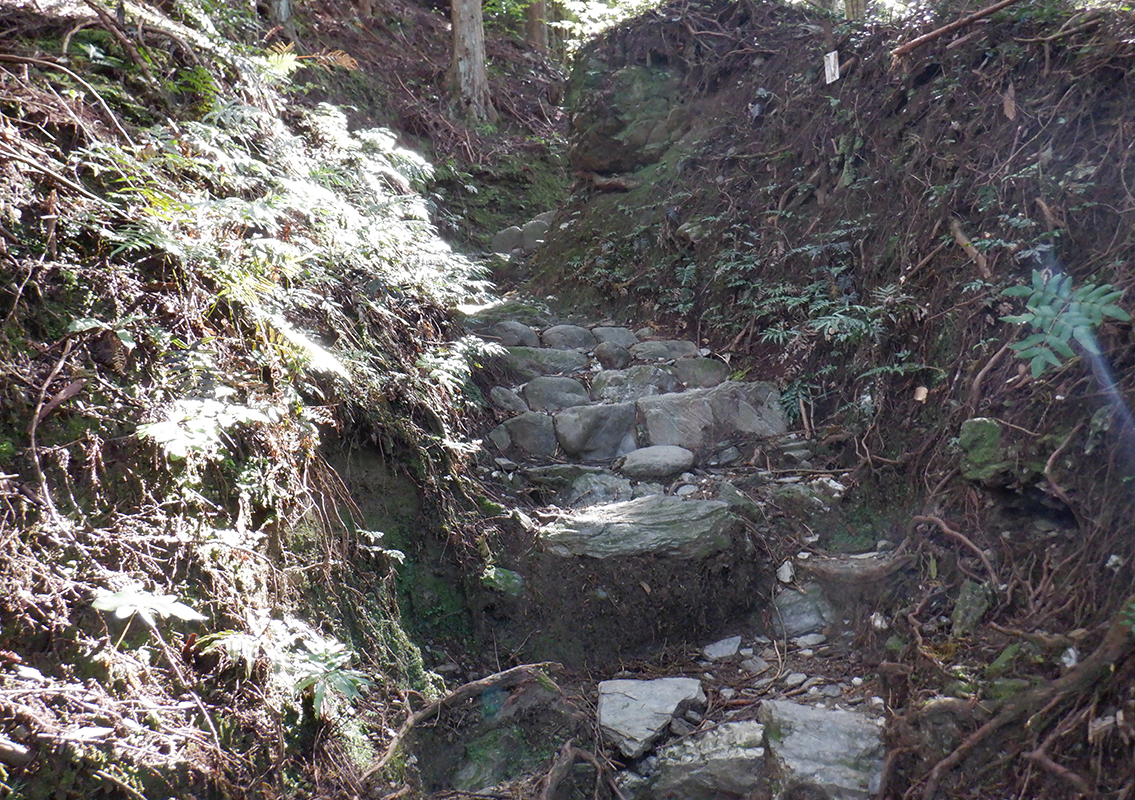 The most difficult place in Shikoku: Henro korogashi
The most difficult place in Shikoku: Henro korogashiSteep unending hills continue after passing the headwaters of the Taetani River. The path appears as though carved out of the ground. It's a true challenge, and visitors realize this is a path of ascetic practice. A forest road was opened in 1984, and now it's accessible by car to the parking lot 500 meters away from the temple grounds. This makes us wonder about the hardships endured by people in the past while climbing the road every day.
-
7
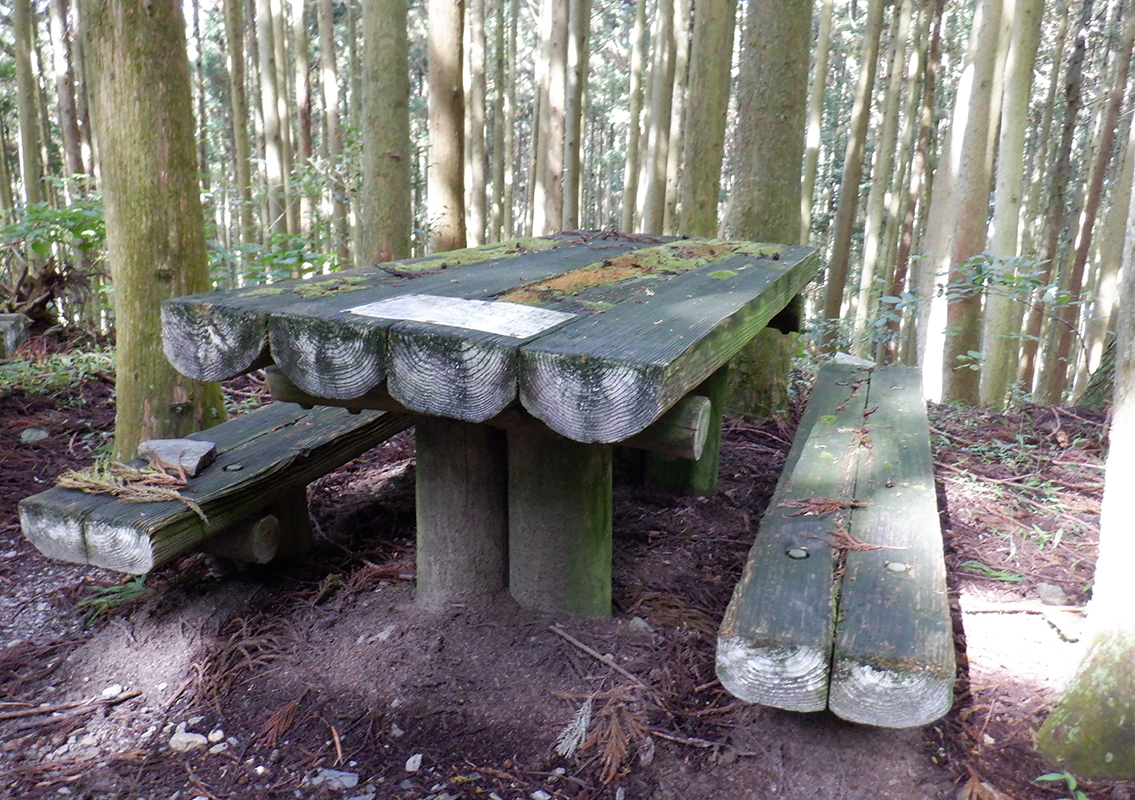 Furubou Rest Station
Furubou Rest StationFurubou Rest Station provides benches. It's only 600 m away from Yokomine Temple. Visitors are encouraged to take a well-deserved rest here before heading out. Last sprint from here leads to the gate of Yokomine Temple, where you conquer the pilgrim's loop.
-
8
 Fudasho Komineji Temple No. 60
Fudasho Komineji Temple No. 60Yokomine Temple No. 60 is famous for its pilgrimages, as well as for its rhododendron flowers. More than 500 rhododendrons bloom from early to mid-May creating a pink hue in the temple grounds. The Yokomine Temple Ground has been added to the National Historic Site Iyo Pilgrim Path on October 13, 2017.



